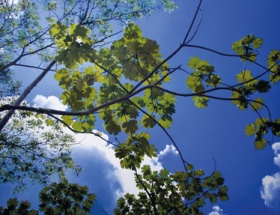An Artist Committed to Virtue
By Yudinela Ortega
A hot coffee at the side of the Reina Sofía Museum, Concha Jerez’s May our memory be stolen and the impatience of someone who is half an hour ahead of her appointment were the perfect preamble for my encounter with Aissa Santiso (Cuba, 1992). Memory rushing to the rescue of the equivocal erasure practiced by censorship; that force of luminance in an exhibition hall; the reordering of images that we consume bored in our daily idleness; and the emptiness of a mutilated polemic in its abandonment… These are ideas that were fluttering in my head before the appointment. And that could be, a priori, some of the arguments to be dealt with in this text.
First an exergue: Being an artist is the virtue of being able to exist freely. Then, an exhaustive review of how he works on ideas detached from their format. How she places them in those fields that she intertwines and dominates at will. Being an artist and being able to exist freely are the motivations from which she projects her diverse scenarios.
Aissa Santiso performs actions that define her, with rigor, as an artist (multifaceted, interdisciplinary, multimedia…) Painting, performance, photography, new media art, video art, each of these supports have served her as channels of sedimentation to the approach of the issues that occupy her. In her way of creating, an idea is not born subject to a specific formality, because it redeems any preconceived label. She has done so since the beginning of her career. In her universes of exploration, she addresses issues related to memory –collective and personal–, the watched and sleepless subject, loneliness, the control exercised by the media over society, the impact of games within the paradigm of art, the effect of color and light on the reception of the object exhibited. In order to treat a type of self-referential message, which is born in the domestic experience, and transmutes into reflections and points that concern us as children of everyday life.
The everyday lives in repetition. It is the closed circle that does not allow us to escape from our existence or whatever it means. And extrapolated to a finite and diverse reality, which in this case is the work of Aissa Santiso, it provides us with an idea of use and prolongation. It indicates the ways of reasoning about the time and space we consume. Everyday life seen as an extension, that which she uses so that her acute artistic contributions cohabit in recurrent points of inflection.
Collection (2014-2020) is a series of paintings and silkscreen prints, most of them medium and large format. A work in progress that takes as a flag those situations that could be lived in any corner of the planet. At the beginning, the collection was nourished by the recovery of family photographs, book and magazine clippings to which the artist had access. Today it is growing subject to the frenzy of social networks, to the diversity and proliferation of an image in very different contexts. Pieces such as: File 823: The Artist, (2020) or The Shipwreck, (2019) function as explanatory visual texts of a behavior that is based on the banal and anodyne. This is what I feel when the stridency of the palette, the alienation in enclosed spaces, the manifest impersonality of a face and the escape from oneself, in the figures, communicate that daily indifference to which I referred at the beginning of this text. In both works, the processes of reception of the individual personality are questioned: how do we see ourselves, how much do we care about the way others see us? The dual component that marks each stroke is anchored to the naturalization of hiding: The artist has to lock herself in her studio to produce, and then has to expose that fruit on her Instagram feed. A logic consummated in the promise that feeds on the superficiality that the image entails.
The Scissors project (2015), discusses the modification that the use of technology has generated in our communication systems. “KIERS SR PART D MI RALIDAD”, is a phrase constructed by excluding some of its characters, and reproduces the semantic structures that we use by default when we communicate via text message. The work structures codes of rapprochement with the spectator, recreating a premeditated complicity, when the spectator manages to recognize herself in the fractured text. This is when the artist returns once again to her interest in surveillance societies, diagnosing the absence of privacy in which everyday life takes place. It takes advantage of the behavior patterns that have to be produced in the gallery space to confront a synchronous truth: that of the spectator (watched) who interacts, and that of the image and sound program used in the piece. Thus provoking the coexistence of the apprehended real and the real manipulated by technology.
Expropriating the recent past is part of that plot that insists on freeing culture from oblivion. Burying the passages of a history that is not politically correct makes me think that chance led me from Concha Jerez’s exhibition to the table where I shared a coffee with the artist. The dimensions in which our historical references can define us are impossible to measure in words. However, cultivating a lucid memory, available to safeguard our present stories, must be possible to rescue in the small actions we perform every day. This is why the photographic series with which Aissa Santiso is building her identity as an artist cannot be missed: Living Notes (2018), The Watchman (2016-2019), Over the Sea (2014), Abstractions (2014-2015), SET (2012), Oedipus (2011-2012) and Dream House (2011).
The type of documentary and self-referential photography she practices exposes the social conflicts that are shared in contemporary times: Depression, loneliness, lack of empathy with any ideal, estrangement? All these are alienating dimensions suffered by the actors of the postmodern story: us. The photograph is their notebook and in each note reveals our aversion to be part of something, to be exposed to social scrutiny. Even when we lose sight of the fact that our existence is subordinated to devices that have been placed in our hands by the same people who pretend to exercise control. Each of these photographic series, in their heterogeneity and free will, narrates the polysemy of a character, the capacity with which intuition identifies a conflict to be resolved, a truth to be told, a paradigm to be questioned. They are an instant document that the artist builds of herself and of the scenarios in which her life is happening. In them she reveals that kind of rootlessness with which we question our intangible being and its connection with the outside; a kind of Truman show that calls into question the here and now to which we cling so much.
The humanistic vocation of art has to be harvested by breaking through the smoke screens that spread around complacency. And she, the artist, does not indulge in complacency. She works scholarship towards a kind of transversal artistic practice. She undertakes long paths of introspection and in those intimate, technological and critical journeys with her time, she finds the utility of virtue.






